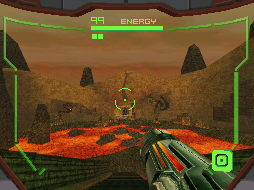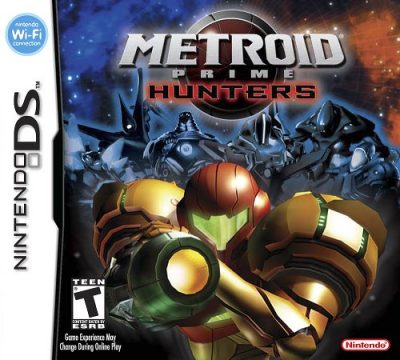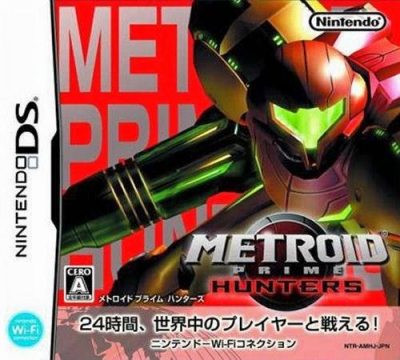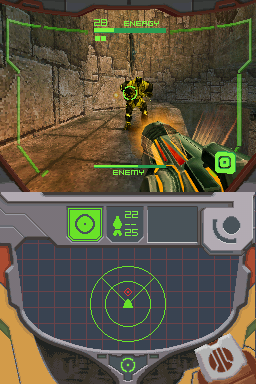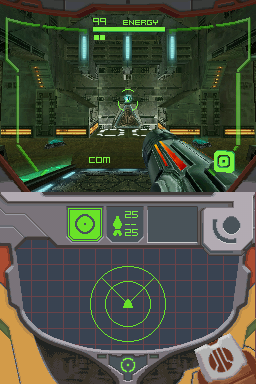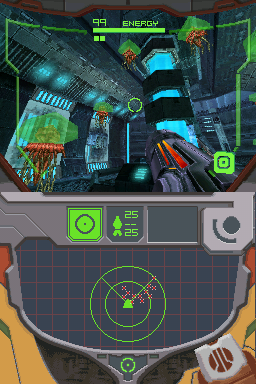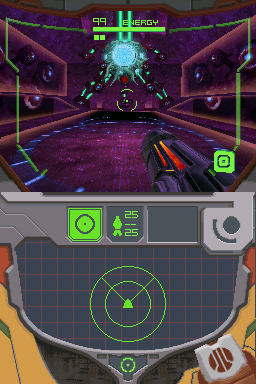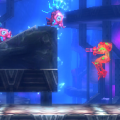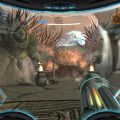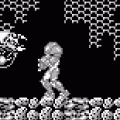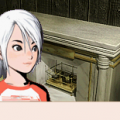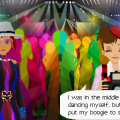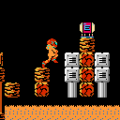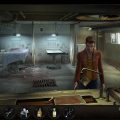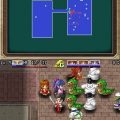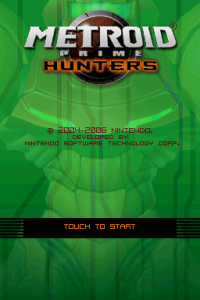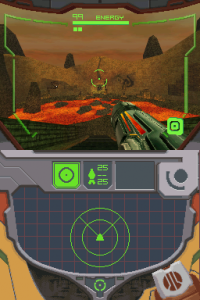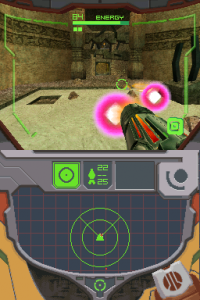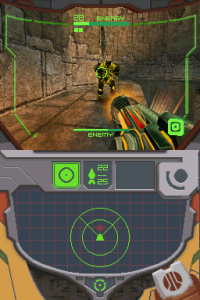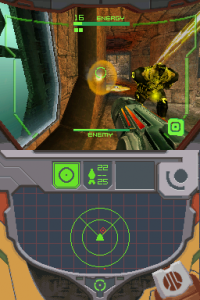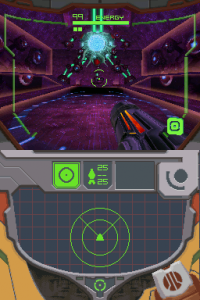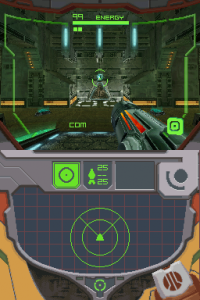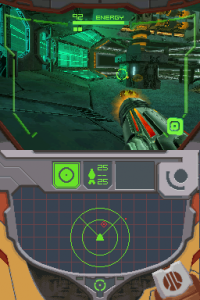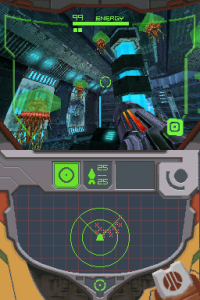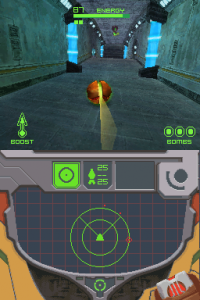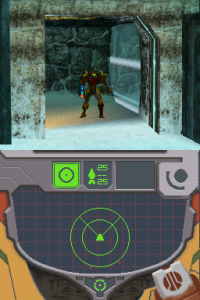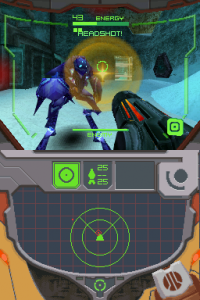Back in the late 1990s, the Nintendo 64 was the console to have for multiplayer first-person shooters. Much of this had to do with the four controller ports built into every system, as well as the presence of games like GoldenEye 007 and Perfect Dark, and even a few lesser quality titles like Turok. Alas, Nintendo was never able to carry that momentum forward to the next generation on the GameCube, where its crown was quickly stolen by Microsoft’s Xbox and the immensely popular Halo. They tried again with Metroid, implementing a split-screen competitive multiplayer mode in Metroid Prime 2, but this failed to catch on.
Even though the GameCube generation ended up being a wash for competitive FPS games, the Nintendo DS was in the portable space where it didn’t have much competition. The Game Boy Advance had a few first-person shooters, like ports of Doom and Duke Nukem 3D, but these were mostly just novelties as opposed to games the audience took seriously. The DS meanwhile could handle 3D roughly on the level of the PlayStation and Nintendo 64, as well as wireless network transmissions, so it was more suitable for a multiplayer first-person shooter than its predecessor. And thus, Metroid Prime Hunters was born.
Hunters wasn’t developed by Retro Studios, as their team was working on the third Metroid Prime at this point. Instead, the project was handled by NST (Nintendo Software Technology), a largely American studio who had made GBC games like Bionic Commando: Elite Forces and the port of Crystalis, as well as the GBA Mario and Donkey Kong titles. The game was directed by Masamichi Abe, who had previously worked on the Pikmin series.
The game takes place in the Alimbic star system, where Samus is tasked by the Galactic Federation to hunt for items that are said to give tremendous powers. This bit of intel was dispensed by a mysterious telepathic transmission, which several other bounty hunters have also intercepted, and end up being Samus’ competition in her journey. The six other hunters include Weavel, Trace, Kanden, Noxus, Spire, and Samus’ sworn archenemy, Sylux.
Since the Nintendo DS doesn’t have any analog input, this game has an unusual control scheme where you move Samus with the direction paid, turn and aim with the touch screen (either with a stylus or using the thumb pad enclosed with certain systems), and the shoulder buttons to fire. This gives a level of control far more precise than even analog sticks ever could, though without the ability to alter the camera’s acceleration, it ends up very jittery. It also leads to other problems – like the console games, there’s some light platforming, but jumping is mapped to the A button, which is tough to hit when you’re trying to position your view. Missiles, the Morph Ball, and other equipment are also activated by hitting the touch screen. A bigger issue is that, depending on which DS (or 3DS) model you’re using, as well as the size of your hands, it can become very uncomfortable to play for prolonged periods.
Despite calling itself a Metroid Prime game, this is really more of a straight first-person shooter, cutting back drastically on the exploratory elements the series is known for. There are four areas to visit: the planets of Alinos and Arcterra, and a pair of space stations called the Celestial Archives and the Vesper Defense Outpost. These areas are mostly linear, though some teleports help you zoom quickly between certain zones, and there are still hidden upgrades to find. However, once you’ve completed the stages, you also need to revisit them later on, being able to access previously inaccessible areas with your newfound powers.
As you work your way through the game, occasionally all of the doors will be locked and you’ll need to fight against one of the other bounty hunters. These are like mini-deathmatch fights against AI bots, and must be disposed of before you can move on. They take a lot of hits, but they also don’t inflict too much damage either, so these aren’t too difficult, though it’s weird to see a Metroid game reward you for hitting headshots. There are also more standard boss battles, though there are only two main types, with several variations over the course of the game.
The single-player mode seems like it was something hastily pasted together in order to satisfy the longtime Metroid Prime fanbase, in order to give them something that superficially resembled a classic Metroid game. But this really is a multiplayer shooter at its core, so anyone expecting an experience like the GameCube and Wii games will almost definitely be disappointed.
Still, the multiplayer is impressively robust considering the technology, and it’s quite a bit better than most other later multiplayer shooter efforts by Nintendo, even including a voice chat. The other bounty hunters were added primarily to give some variety, so all of the players aren’t just playing as differently colored Samuses. The DS online functionality has long been disabled, but local play will always be functional, providing you can find enough people with the hardware and willing to play.
This is a real technical marvel, though. It’s obviously scaled back, running at a much lower resolution than the GameCube games, with plenty of jaggies and much simpler level geometry, but it actually does an outstanding job of replicating the look and feel of its bigger brothers. The lighting in particular looks fantastic, as do the polygonal character models (relatively speaking, of course), and the game runs at an incredibly smooth 60 FPS. Nintendo of America obviously felt that this was the perfect technical showcase for the DS, since a demo subtitled First Hunt was included with the first batch of the system, and most subsequent 3D games for the system didn’t look (or run) nearly as well.
The soundtrack, too, is excellent, basically being more Metroid Prime-style music coming through the DS synth. The title screen track, always a highlight in these games, is marvelous, and the Alinos theme has the same backing rhythm as the Chozo Ruins, but with a completely different main melody.
Metroid Prime Hunters is a peculiar artifact from a very specific time. It’s hard to imagine that too many folks want to play a multiplayer shooter on DS nowadays, especially due to the lack of online support, and there’s not much here for fans of the mainline games. Still, it’s hard not to be impressed by how faithfully it replicates the look and feel of Metroid Prime on a system with such limited horsepower. As a downscaled proof of concept, it feels like a neat tech demo, and is still worth messing around with. Plus, some of its concepts, like using Samus’ ship to fly around the galaxy and the presence of multiple bounty hunters was carried forward, for better or worse, to Metroid Prime 3.
